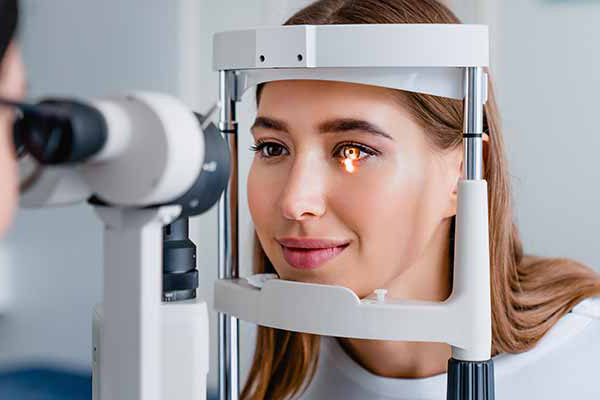The Benefits And Drawbacks of Various Refractive Surgical Procedures for Improved Eyecare

LASIK Surgical Treatment
LASIK surgery is a generally carried out refractive treatment that aims to fix vision issues such as farsightedness, astigmatism, and nearsightedness. Throughout the procedure, a slim flap is created on the cornea, and a laser is utilized to reshape the underlying cells, remedying the refractive error.
One of the main benefits of LASIK surgical procedure is the rapid improvement in vision experienced by several patients. It is essential for individuals thinking about LASIK surgery to undergo an extensive examination by an eye treatment professional to determine if they are suitable prospects for the procedure.
PRK Procedure
The PRK treatment, additionally known as Photorefractive Keratectomy, is a type of refractive surgical treatment that intends to deal with vision problems similar to LASIK surgical treatment. Unlike LASIK, which involves creating a flap in the cornea, PRK functions on the surface area layer of the cornea.
One of the benefits of PRK over LASIK is that it removes the threat of flap-related difficulties since no flap is produced throughout the surgical procedure. This can be beneficial for individuals with slim corneas or those involved in call sporting activities where eye injury is a possibility. The recuperation time for PRK is commonly longer compared to LASIK, as the outer layer of the cornea needs time to restore after the procedure. Despite the longer recovery duration, PRK can be an appropriate option for individuals looking for vision improvement surgical procedure.
SMILE Surgical Treatment
A cutting-edge refractive surgical treatment technique getting popularity in the area of ophthalmology is SMILE Surgical treatment. Little Laceration Lenticule Removal (SMILE) is a minimally intrusive procedure that remedies vision by reshaping the cornea making use of a femtosecond laser. Unlike traditional LASIK surgery, SMILE Surgery involves producing a tiny incision in the cornea to extract a lenticule, which results in much less interruption to the corneal framework and possibly faster healing times.
Among the primary benefits of SMILE Surgical procedure is its capability to treat nearsightedness (nearsightedness) and astigmatism with high accuracy, causing exceptional visual results for individuals. The minimally invasive nature of the treatment additionally reduces the risk of issues such as dry eye syndrome, making it a desirable alternative for individuals seeking refractive surgical procedure.

LASEK Technique
Having explored the advantages and considerations of SMILE Surgery, one more significant refractive surgical procedure method worth examining is the LASEK Method. LASEK, which stands for Laser-Assisted Subepithelial Keratectomy, is a form of laser eye surgical procedure that intends to fix refractive mistakes such as myopia (nearsightedness), hyperopia (farsightedness), and astigmatism.
Unlike LASIK, LASEK does not include developing a corneal flap. Instead, throughout a LASEK procedure, the specialist makes use of a watered down alcohol remedy to loosen the slim external layer of the cornea, called the epithelium. This layer is after that carefully moved apart to allow the laser to reshape the underlying corneal cells. When the cornea has actually been reshaped to the preferred degree, the epithelial layer is repositioned.
One of the main advantages of LASEK is that it can be ideal for people with thin corneas that might not be excellent prospects for LASIK. In addition, LASEK generally leads to marginal post-operative discomfort and a quicker recuperation time contrasted to PRK. The visual recuperation process with LASEK may be a little longer than with LASIK.
Implantable Get In Touch With Lenses
Implantable Contact Lenses provide a long-lasting vision improvement remedy for people seeking a choice to typical contact lenses or glasses. These lenses, additionally called phakic intraocular lenses, are operatively inserted into the eye to correct refractive mistakes such as nearsightedness (nearsightedness), hyperopia (farsightedness), and astigmatism. eye doctors in andalusia. Unlike conventional contact lenses that rest on the surface area of the eye, implantable call lenses function within the eye itself, giving clear vision without the need for daily upkeep or removal
One of the essential benefits of implantable call lenses is their permanence. When put, they can stay in the eye indefinitely, supplying secure and consistent vision adjustment. In addition, these lenses can be an exceptional alternative for people who are not good prospects for laser eye surgery or that favor a relatively easy to fix vision correction procedure.
However, implantable call lenses do bring some risks, consisting of the capacity for cataracts or raised eye stress. It is essential for people considering this choice to speak with an eye care specialist to establish if implantable call lenses are the ideal choice for their certain demands and eye health and wellness.
Final Thought
Finally, each type of refractive surgical procedure has its very own benefits and disadvantages. LASIK surgery is prominent for its fast recuperation time, while PRK procedure may appropriate see this for people with thin corneas. SMILE surgical treatment uses very little pain throughout the procedure, home but LASEK strategy may have a longer healing process. Implantable get in touch with lenses provide an option for those who are not ideal candidates for standard surgical procedures. Patients must seek advice from their eye care company to identify the most effective alternative for their specific demands.

Generally, SMILE Surgical treatment presents an encouraging choice for people looking to enhance their vision with refractive surgical procedure.